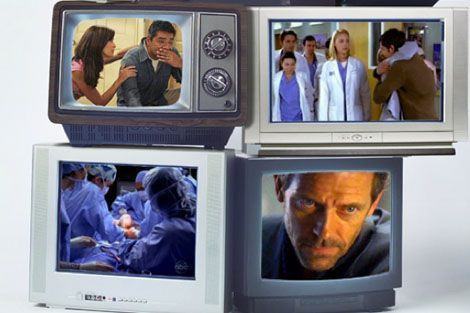February 11, 2014 — Can a TV show change the way people think about a health issue?
Yes, it can—and it has. One of the most successful public health campaigns—the Designated Driver Campaign, spearheaded in the United States in the late 1980s by Harvard School of Public Health’s (HSPH) Center for Health Communication, led by [[Jay Winsten]]—got a major boost from being featured in story lines on shows including “Cheers” and “L.A. Law.”
There are plenty of other examples, according to Darnell Strom, an executive at the CAA Foundation, the philanthropic arm of Creative Artists Agency, Hollywood’s leading talent agency. Introduced by Winsten to a standing-room-only crowd in HSPH’s Kresge G2 on February 4, 2014, Strom discussed how TV shows and movies have been able to profoundly impact public views on health issues such as wearing seat belts or smoking, social issues like same-sex marriage, and environmental issues like climate change.
Before TV and movies, the top popular culture influencers were books and theater, Strom said. An early example of a major influencer is the 1852 book Uncle Tom’s Cabin, by Harriet Beecher Stowe, which at the time “was the second-most read book in the world—second only to the Bible,” Strom said. Depicting slaves under physical and psychological distress, the book further ignited the slavery debate, he said.
TV as social influencer
These days, sitcoms and scripted dramas (“entertainment television”) have become a significant source of information for the general public. Citing a 2008 report from the Kaiser Family Foundation and the University of Southern California (USC), Strom said 26% of the public said entertainment television was one of their top three sources for health information, and about half said they consider the health information in these programs to be accurate.
The statistics suggest there’s a “huge opportunity for organizations to team up with television show runners and create some sort of coordinated campaign that uses this large platform to help get your message out in an accurate way,” said Strom.
As examples of TV’s potential reach, Strom listed four shows—“Grey’s Anatomy,” “House,” “CSI: NY” and “Numb3rs”—that all ran episodes about organ donation in 2006. “Numb3rs” also provided viewers with information at the end of the show on how to become an organ donor; later, USC researchers found that many viewers of that episode who were not previously organ donors decided to become donors.
A switch on gay marriage
Ten years ago, a majority of the American public was opposed to same-sex marriage; today most are in favor. Strom said a recent Human Rights Campaign study suggests that TV played a role: 8 out of 10 respondents said they knew someone gay, but when asked who it was, many said they didn’t really “know” the person—that it was a TV character. Shows like “Glee,” “Modern Family,” and “Will & Grace,” portraying gay characters “who were going through the same ups and downs as everyone else,” have played a major role in shifting American culture, Strom said.
Spreading the word about climate change
Al Gore’s movie “An Inconvenient Truth” had a huge impact, Strom said. One billion people saw the movie; 33% believed in climate change before seeing the movie, 85% after; and the movie prompted more than 15 new pieces of legislation around the world on climate change, Strom said.
These days, thanks to social media, anyone can promote a public health issue or any cause, said Strom. He suggested a three-step method: Figure out how to tell a compelling emotional story; use social media to promote the story; and, at the end of the story, include tangible action steps on how people can help.
photo courtesy Kaiser Family Foundation report “How Healthy is Prime Time?”
